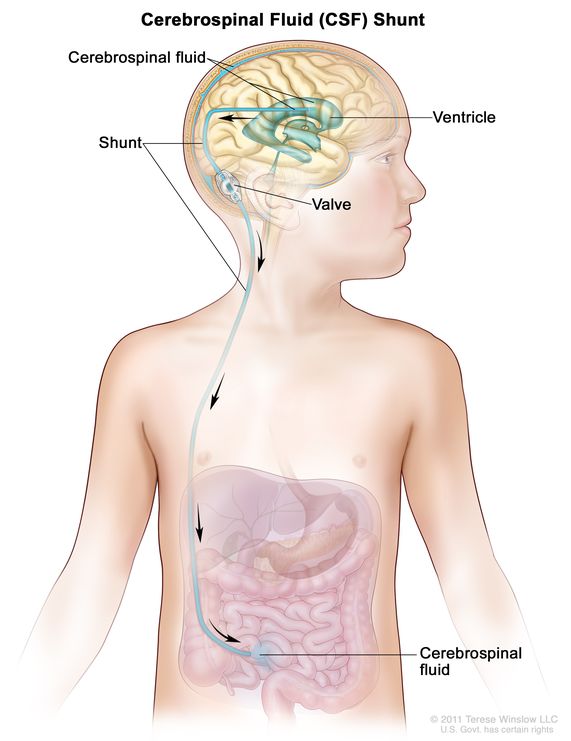cerebrospinal fluid diversion
(seh-REE-broh-SPY-nul FLOO-id dih-VER-zhun)
A process that uses a shunt (a long, thin tube) to drain extra cerebrospinal fluid (CSF) that has built up around the brain or spinal cord. The shunt is placed in a ventricle (fluid-filled space) of the brain or in a fluid-filled space between the thin layers of tissue around the spinal cord. It is then threaded under the skin to another part of the body, usually the abdomen, heart, or space between the chest wall and the lungs. The shunt carries extra CSF away from the brain or spinal cord so it may be absorbed elsewhere in the body. This decreases the fluid and pressure on the brain or spinal cord.
